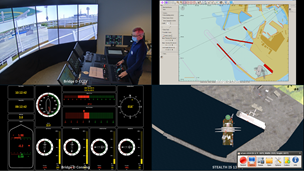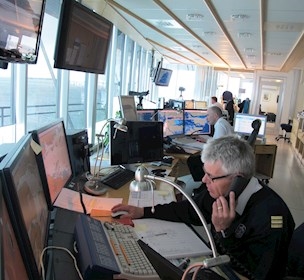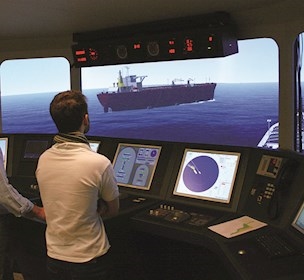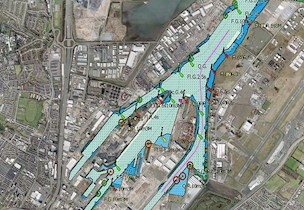Successful remote simulation at Port of Rønne
Port of Rønne has carried out successful ship simulations over 2 days with remote participation via Teams. The purpose was to investigate whether a new port design could accommodate larger vessels.
The Port of Rønne has plans for a new port design, so that larger vessels such as cruise ships can dock at the west-facing port on Bornholm. The harbor design was ready to be tested in our ship simulator in Lyngby. To involve all relevant stakeholders, a remote setup allowed participants to observe and contribute to the simulations from various locations.
“Our goal with these simulations is to ensure the quality of the design and minimize investment risks. It’s crucial that the port works as intended,” says Thomas Bendtsen, CEO of Port of Rønne.
Collaboration across teams
The simulations brought together Port of Rønne's Board, the shipping company, and project advisors Niras, with participation both onsite and remotely.
“My role is to ensure we build the right infrastructure while gaining valuable insights from the captains. Despite being remote, I could still sense their reactions and gather critical feedback,” says Thomas Bendtsen.

Engaging stakeholders through remote participation
The remote setup enabled 30 participants, including cruise ship captains from Germany, to follow the simulations. They interacted with pilot Peter Herskind and instructor Carl Thue Rabjerg, who were present at the simulator in Lyngby. The captains appreciated the system and contributed insights during debriefings, agreeing on operational limits and design considerations.
"It worked surprisingly well. Even though you know you're being monitored, you forget about it and focus on the task,” says Herskind, emphasizing the value of remote collaboration.
Valuable insights for the future
The simulations highlighted improvements such as buoy placement, guide lights, and operational restrictions. “This process gave us valuable knowledge to continue our discussions with customers and move forward with confidence in the design,” concludes Bendtsen.
Innovative remote simulation setup
The remote simulation setup allowed participants to view streamed visuals of the simulator's out-of-window view, radar, electronic charts, and vessel controls. This setup is adaptable for similar projects, ensuring seamless collaboration even when participants are not physically present.
Remote simulation set-up
In remote simulations, the participants in the simulations communicates via Teams. Those who are not in the ship simulator can see streamed images of the visual out-of-window view, radar, electronic charts and conning display (where the vessel's speed, course, rotational speed, rudder angles, handle settings, wind, side speed for and aft appears).
The remote solution can be used for similar studies and can also be used in simulations where a pilot is placed outside the simulators giving orders to the captain or instructor on the simulator bridge.





